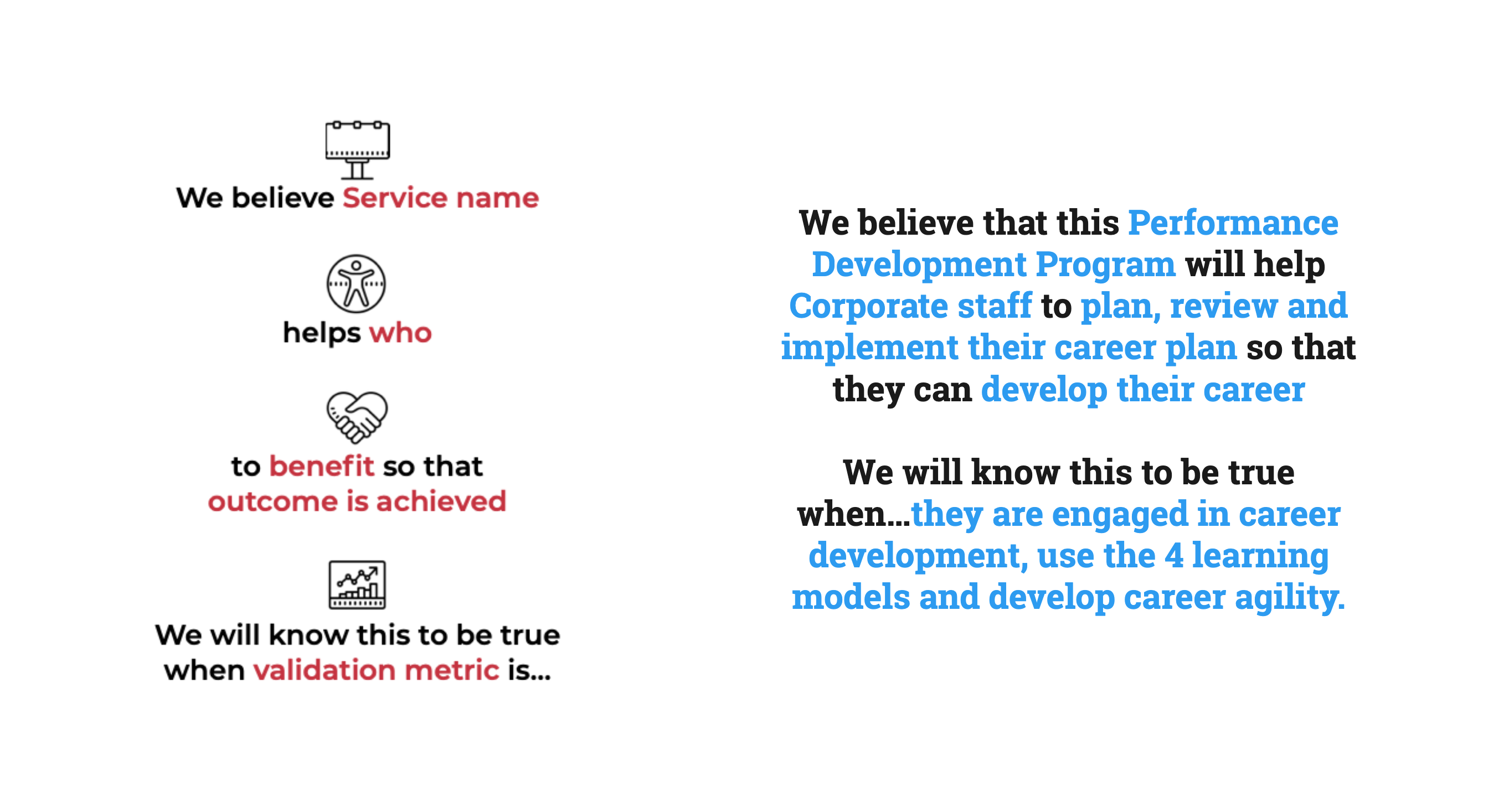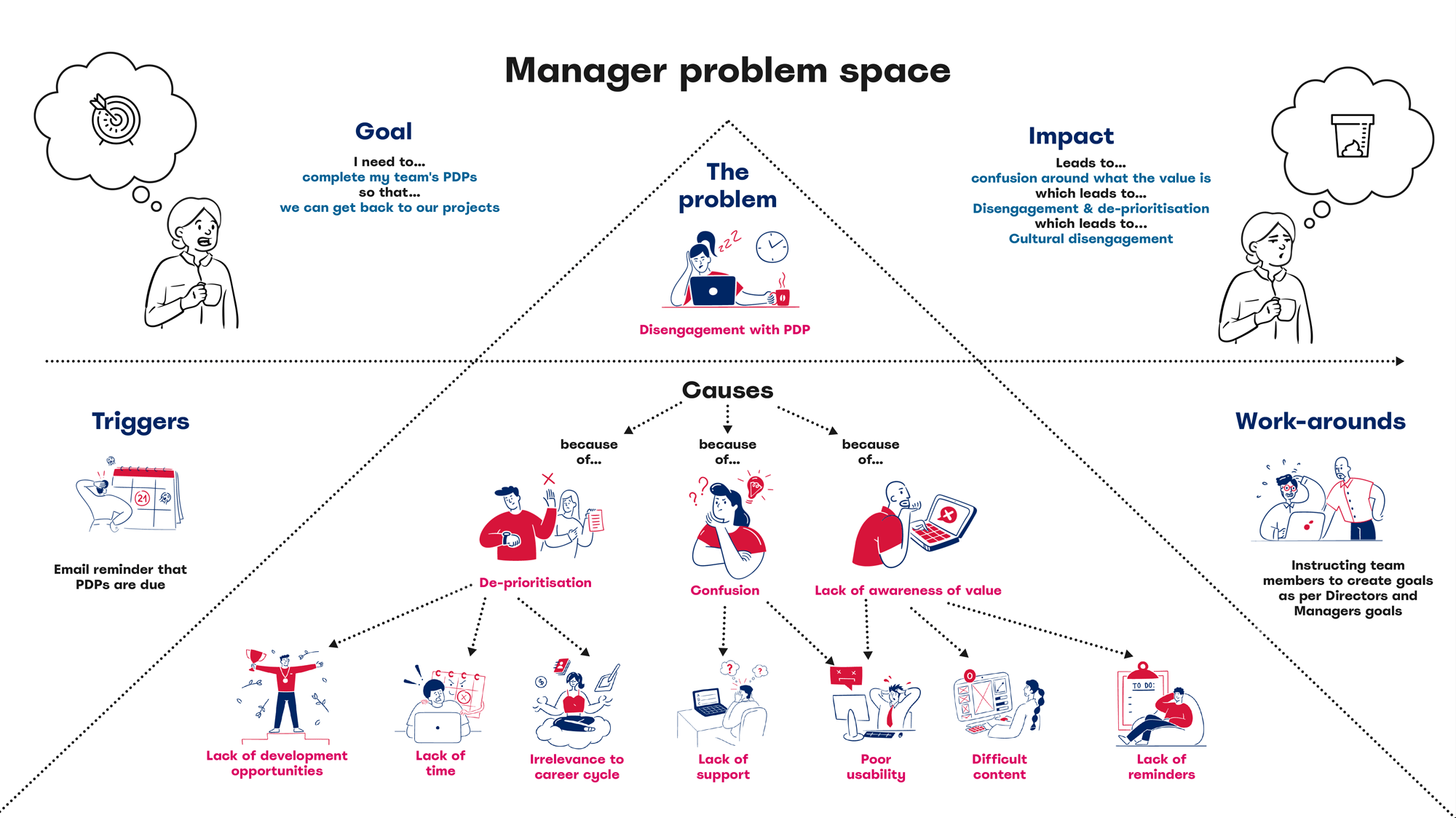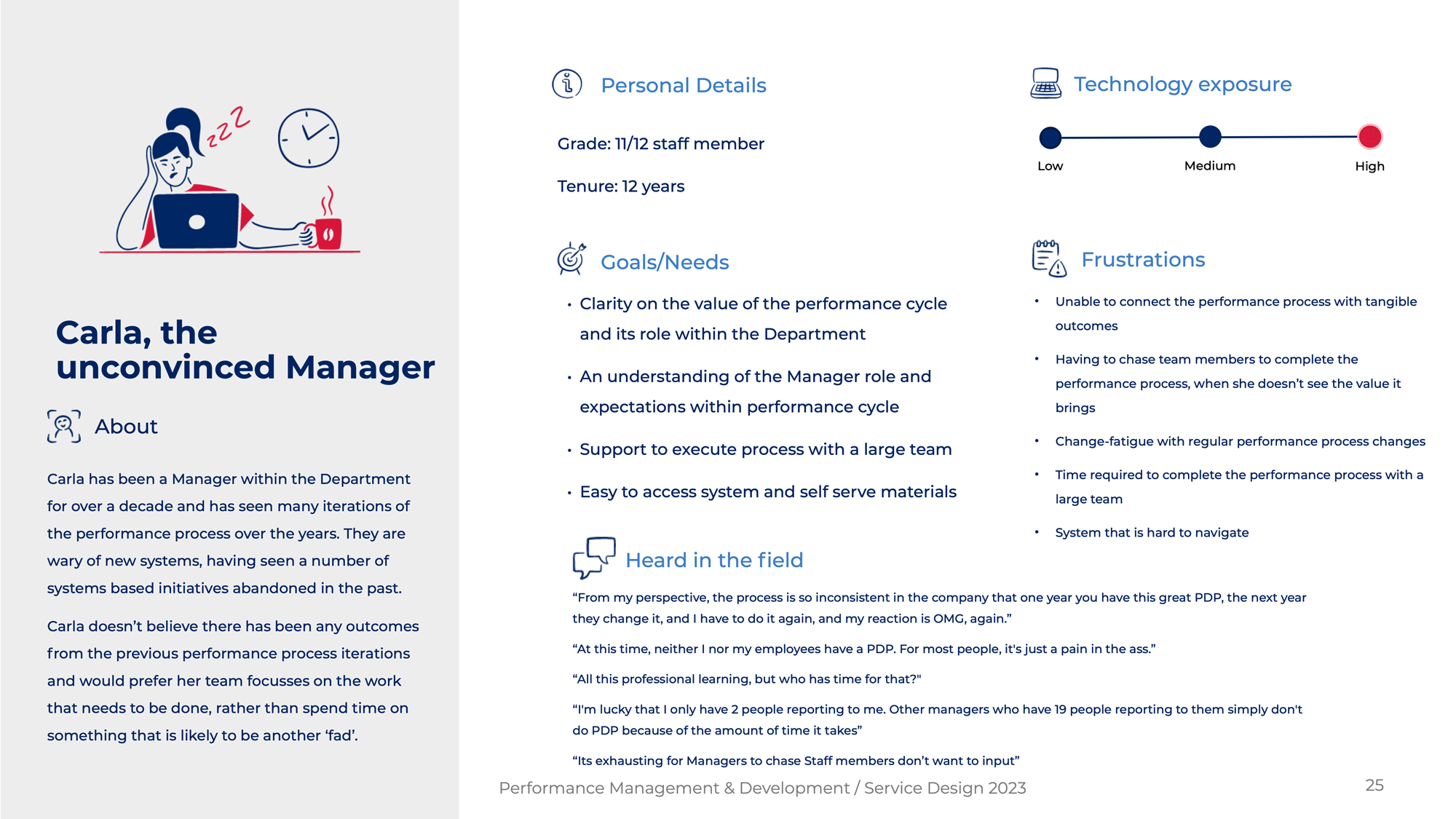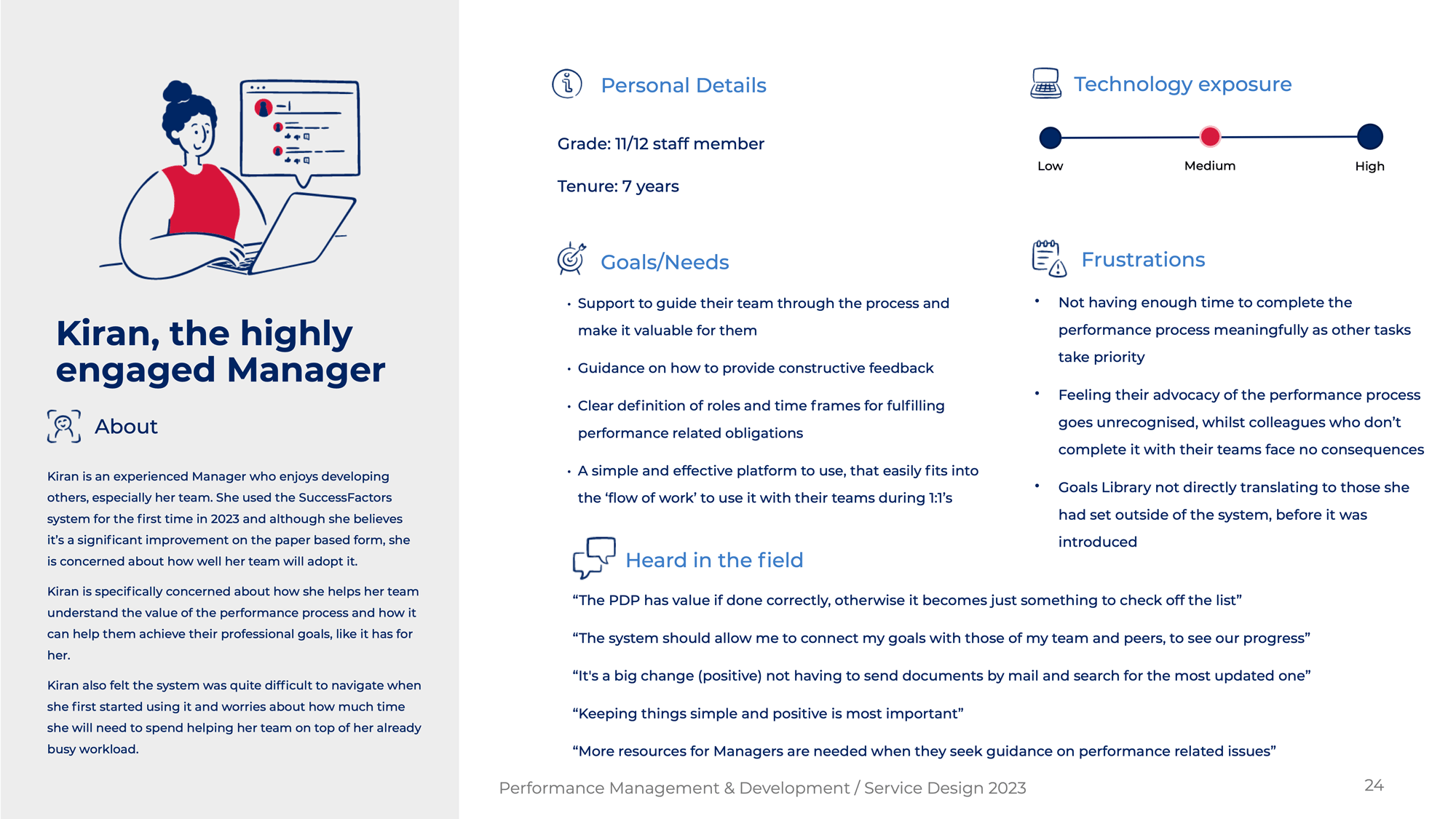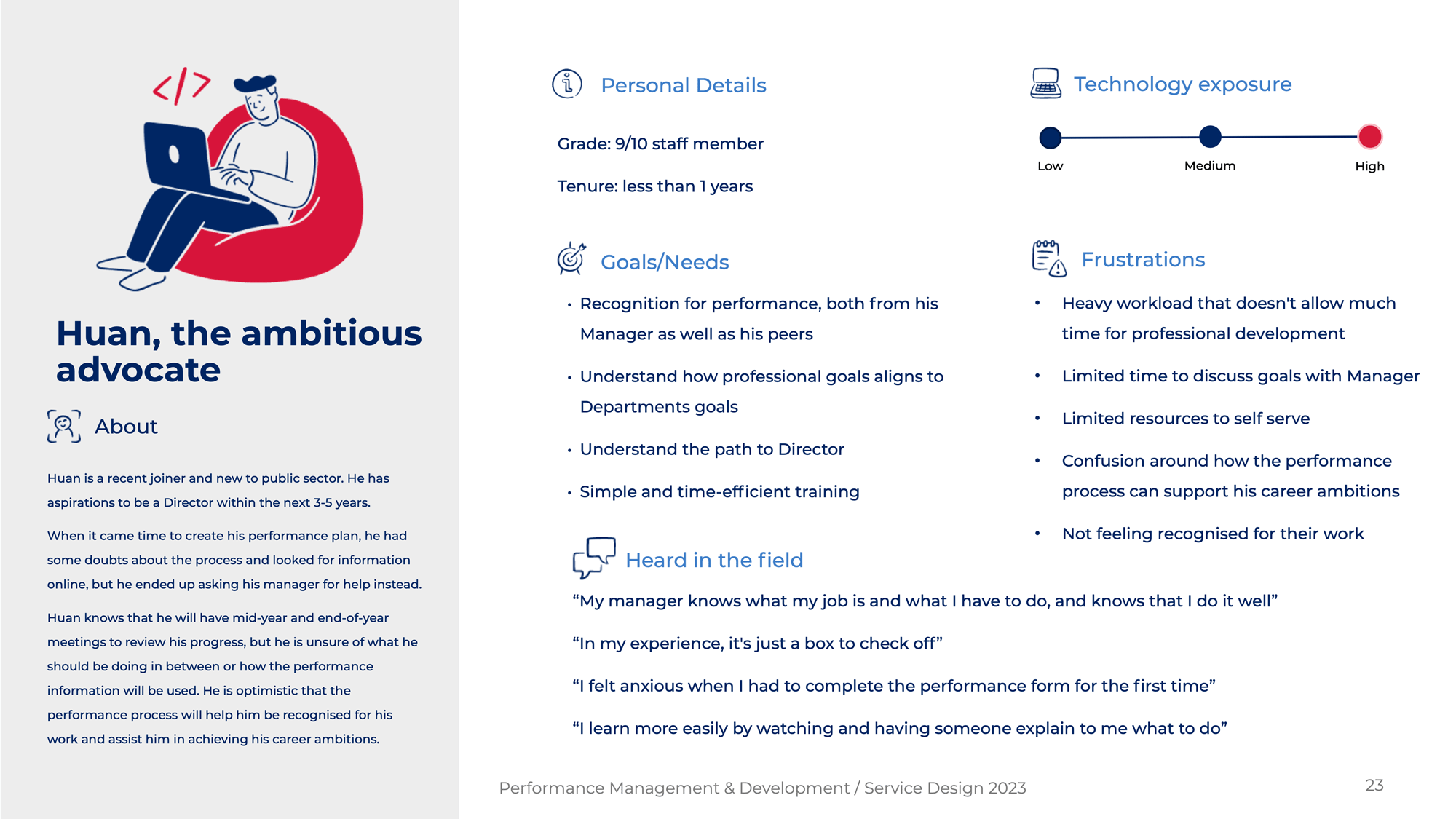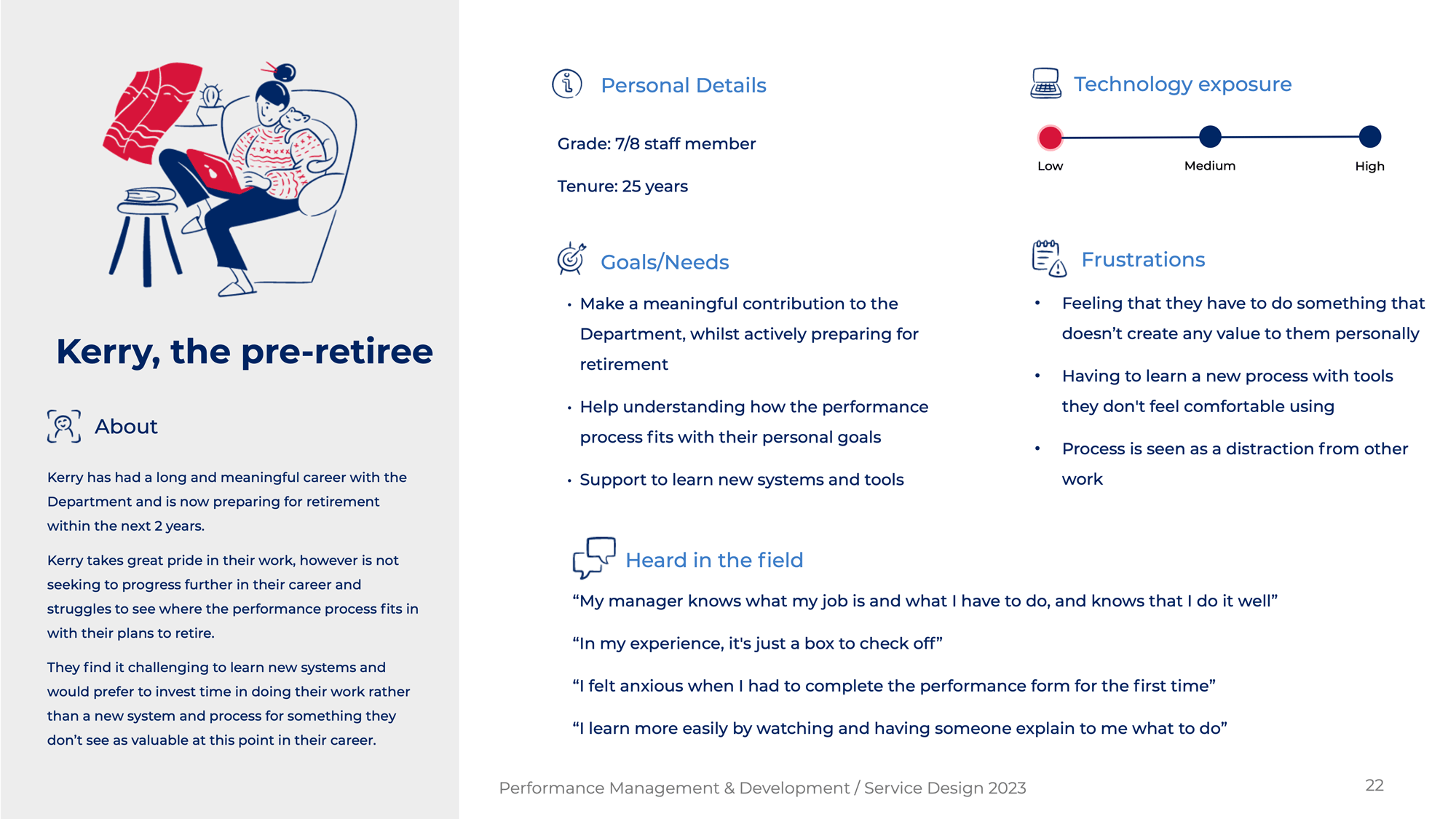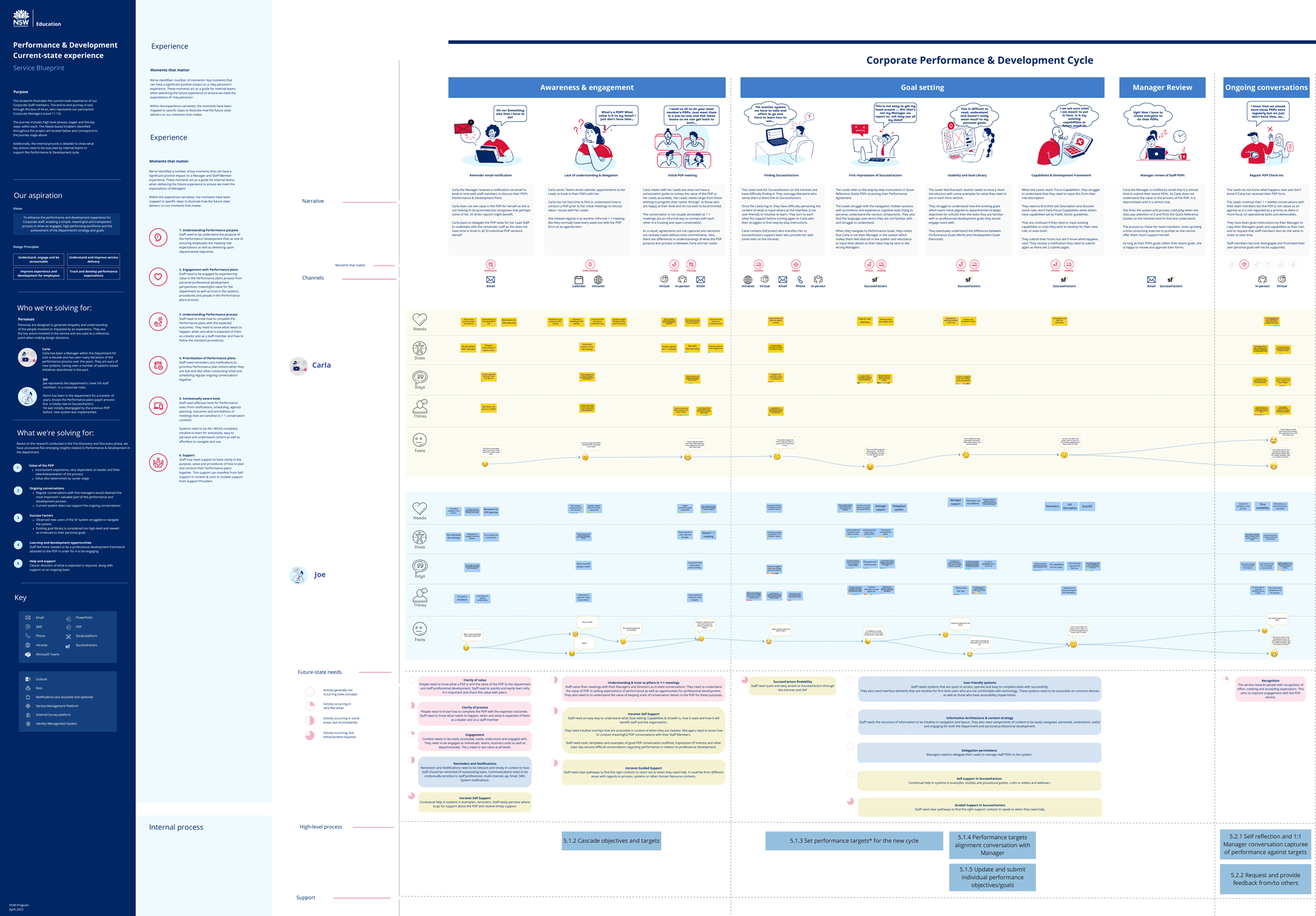The NSW Department of Education was planning on implementing its Performance Management & Development framework for the remainder of the non-school staff members.
Defining the problem
The Performance & Development Program (PDP) had previously been implemented on Executive Level employees of the Department. An important part of rolling out the PDP on the remainder of Managers and their staff was to understand how the service could be improved.
In order to understand how it could be improved, a clear definition of success needed to be established. The following vision statement was written and agreed to by all stakeholders in a collaborative workshop:
We believe that this Performance Development Program will help Corporate staff to plan, review and implement their career plan so that they can develop their career. We will know this to be true when…they are engaged in career development, use the 4 learning models and develop career agility.
Problem space exploration
Manager PDP Problems
Root cause analysis revealed that the main challenges to Managers completing their PDP process were down to disengagement.
The primary causes of the disengagement were that Managers did not see value in the PDP. This was because they were often confused by lack of clear information and support. This meant they de-prioritised the process until they needed to submit their team PDPs close to the submission deadlines.
The impact of leaving PDPs to the last minute meant that the Managers often rushed their staff to complete their own PDPs based on team goals or ones based on Managerial goals.
The result was that the volume of submissions were substantial for Directors to process and the quality of data in the documentation was poor or non-existent. This meant that staff Performance and Development targets tended to suffer poor outcomes for their career in the department.
Staff PDP Problems
Unsurprisingly, the disengagement experienced by Managers of teams tended to flow down to their staff by attitude of the PDP process being de-prioritised and being disengaged with.
There was a sense of frustration for those staff members that wished to develop their careers that their Managers did not see value in their PDPs.
This led to higher attrition rates as valued staff members left their teams to other areas within the department or leaving the organisation altogether.
This collective behaviour within the department was regarded as a cultural problem by the Human Resources division. They were enthusiastic about identifying the primary causes of the problems in order to solve them and improve the outcomes for staff within the department.
Manager & Staff check-ins

Trusted informal 1-1 meetings
Regular 1-1 manager conversations were happening with most staff. One-to-one meetings were regarded as valuable for building trust for Managers and Staff Members alike. They tended to be regular and informal by nature.
PDP Check-ins
One-to-one PDP meetings were not being scheduled regularly. These conversations did not follow a strict framework which meant Managers were not equipped to conduct difficult conversations. Additionally, contractor Managers did not have guidance or access to PDPs meaning Staff Members are forced to find other Managers who did not know their performance contexts.
Distrust
The process of capturing information about a Staff member’s performance without understanding the PDP value and process raised concerns about trust and how the information could be used against staff members and managers in the future.
Using the SuccessFactors system

Usability challenges
Staff found the system to be unfriendly and difficult to learn, with unintuitive controls and information. Staff members expected that goal inputs should be flexible to their needs. The platform’s usability issues had resulted in decreased user engagement.
Content clarity
Staff expressed that the language in the system was not user-friendly or easy to understand for first-time users. They felt it was important to use Easy Language to effectively communicate the intended message.
Distrust
The process of capturing information about a Staff member’s performance without understanding the PDP value and process raised concerns about trust and how the information could be used against staff members and managers in the future.
Goal setting
Staff expressed that the existing Goal Library labels were ambiguous and regarded as irrelevant to their personal goals. Staff expected to map their own goals to their Manager and peers and some would engage in collective team goals. They found the system overly complex and desired a simpler presentation of the user interface.
Notifications
Staff members expected the system should have had relevant notifications and reminders of what needs doing, by who and when.
Learning and Development & Performance Management
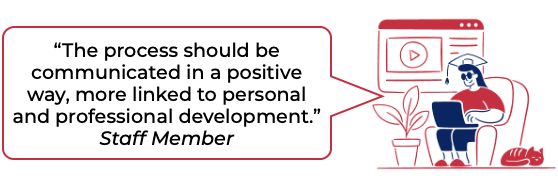
Professional Development
Staff felt there needed to be a professional development framework attached to the PDP for it to be engaging.
Development over Management
Some staff expressed a gap in Professional Development with a need to focus on development over management.
Goals and development
Staff expected there to be a link from the Goals they were aiming for to be linked to how they would be guided in achieving them through professional development.
Barriers to Professional Development
Support from management was the main dependency for staff obtaining Professional Development opportunities. The impact of not receiving this support is frustration, disengagement and possible attrition.
Expectations in the PDP
Staff who were in the process of planning their PDP in SuccessFactors expressed that they expected to see references and links to Professional Development where it was most relevant (eg. Goal setting)
Help and support
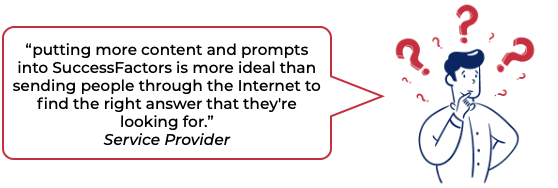
Self support
Staff felt it was important to have an introduction to the PDP that explains the purpose and the value of the process. They expressed it was difficult and time-consuming to find and read the amount of content to support themselves in the Intranet portal.
Peer support
Staff members tended to ask their peers and managers for guidance on the PDP process and systems as a quick way to get guided support. However, sometimes they would get incorrect guidance if their peers did not understand the PDP purpose and process entirely.
Guided support
Service Providers acknowledged that there was a need for guidance in knowing how to conduct good PDP conversations and how to format inputs with examples. Training was available on how to use the system, but staff struggled to find how the process was carried out or how it provided value.
Persona Archetypes

Behaviour types within the organisation
The PDP team felt that in order to understand and simplify the diversity of behaviours regarding the PDP process from staff, personas representing the archetypes would be a good tool to use as a narrative to summarise the attitudes that were starting to emerge from the qualitative interviews being conducted.
Current State PDP Journey
A user journey is a memorable tool to tell a story of the current state experiences of the employees. They use actual quotes captured from the interviews to illustrate the contexts of each scenario. The journey is a high-level summary of the challenges faced and how people deal with typical situations. It will not be detailed enough to illustrate every scenario and decision point in the process, the number of people involved or the tools they use. The user journey highlights the most important problems to solve and allows audiences to empathise and work together to solve them.
Future State PDP Journey
A future state journey will try to capture the experiences desired as outcomes. Ideally, stakeholders will need to understand the current state journey to envision how the future state journey will be improved. The solutions proposed should try to produce these experiences as outcomes that the stakeholders agree upon.
